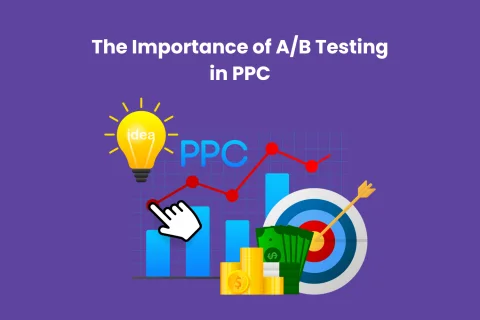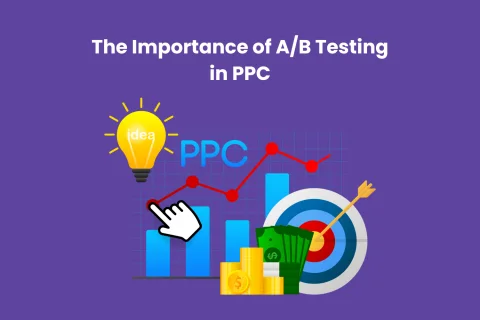
In digital marketing, A/B testing has emerged as a critical tool, especially within the realm of Pay-Per-Click (PPC) advertising. Understanding the nuances of A/B testing is essential for those invested in Marketing Training Courses. Not only does it enhance the knowledge base, but it also equips marketers with practical PPC Tips to optimise their campaigns effectively.
Table of Contents
- Why A/B Testing is Crucial in PPC
- Implementing A/B Testing in Your PPC Strategy
- Challenges and Best Practices
- Conclusion
Why A/B Testing is Crucial in PPC
Enhances Ad Performance
A/B testing in PPC is invaluable for refining ad performance. By methodically comparing variations of ads, marketers can pinpoint the most effective elements, like headlines, descriptions, and CTAs.
This systematic approach identifies which combinations resonate most with the target audience and unveils insights into consumer preferences and trends. As a result, ads become more engaging and relevant, significantly boosting key metrics like click-through rates and overall ad effectiveness. This continuous improvement cycle ensures ads remain compelling and competitive in a dynamic market.
Improves User Experience
User experience is a cornerstone in PPC campaigns. A/B testing is crucial for understanding what engages your audience, leading to more user-friendly ads.
This enhancement improves click-through rates (CTRs) and elevates the overall user journey, ensuring a more satisfying and relevant interaction with your brand. By tailoring ads to user preferences and feedback, A/B testing fosters a sense of connection and responsiveness, making each interaction more impactful and memorable.
Informed Decision Making
Data-driven decisions are the backbone of successful PPC campaigns. A/B testing provides concrete data on what works and what doesn’t, eliminating guesswork and enabling marketers to make informed decisions.
Budget Optimiation
By identifying the most effective ad elements, A/B testing helps allocate the budget more efficiently. This ensures that your PPC spend is used most effectively to achieve the best possible return on investment (ROI).
Competitive Advantage
In the competitive digital advertising space, standing out is crucial. A/B testing offers a strategic edge by enabling the refinement of ad elements, making them more appealing and effective than those of competitors. It allows marketers to stay ahead of trends and swiftly adapt to changing consumer behaviours.
Implementing A/B Testing in Your PPC Strategy
Define Clear Objectives
Before you start, defining what you want to achieve with your A/B testing is crucial. Whether it’s increasing CTR, reducing cost-per-click (CPC), or improving conversion rates, having a clear goal helps in setting up effective tests.
Choose What to Test
Decide on the elements you want to test. This could be anything from ad copy and imagery to landing pages and CTA buttons. It’s advisable to test one element at a time to clearly understand its impact.
Create Variations
Develop two versions (A and B) of your ad, changing only the element you’re testing. This ensures that any difference in performance can be attributed to that specific change.
Test Simultaneously
Run both versions of your ad simultaneously to the same audience. This ensures that external factors such as time of day or day of the week don’t skew the results.
Analye Results
After running the test for a sufficient period, analye the data to see which version performed better. Look at metrics such as CTR, conversion rate, and quality score.
Implement Findings
Use the knowledge and information obtained through your A/B test to enhance and fine-tune your PPC campaigns for better results. Please let me know if you need any further assistance. Implement the winning elements and continue to test and refine your strategies.
Challenges and Best Practices
1. Statistical Significance: Ensure that your test results are statistically significant. This means running the test for a sufficient duration to obtain reliable results.
2. Avoid Common Pitfalls: Common mistakes include changing multiple elements at once, not testing for long enough, or not having a clear hypothesis.
3. Continuous Learning: A/B testing is not a one-time activity. Continuous testing and learning are crucial to staying abreast of evolving consumer preferences and market trends.
4. Utilie Tools and Resources: Leverage the tools available within your PPC platforms, such as Google Ads, to facilitate effective A/B testing. Many platforms offer features specifically designed to aid in testing and analysis.
Conclusion
A/B testing is not just a tactic; it’s an essential component of a successful PPC strategy. By continuously testing and optimizing, marketers can ensure their PPC campaigns are as effective as possible. It’s a dynamic process that aligns perfectly with the ever-changing nature of digital marketing. For those pursuing marketing training courses, mastering A/B testing is not just a skill; it’s a necessity in the toolkit of every successful PPC marketer.


